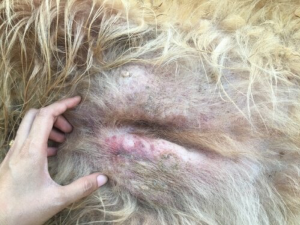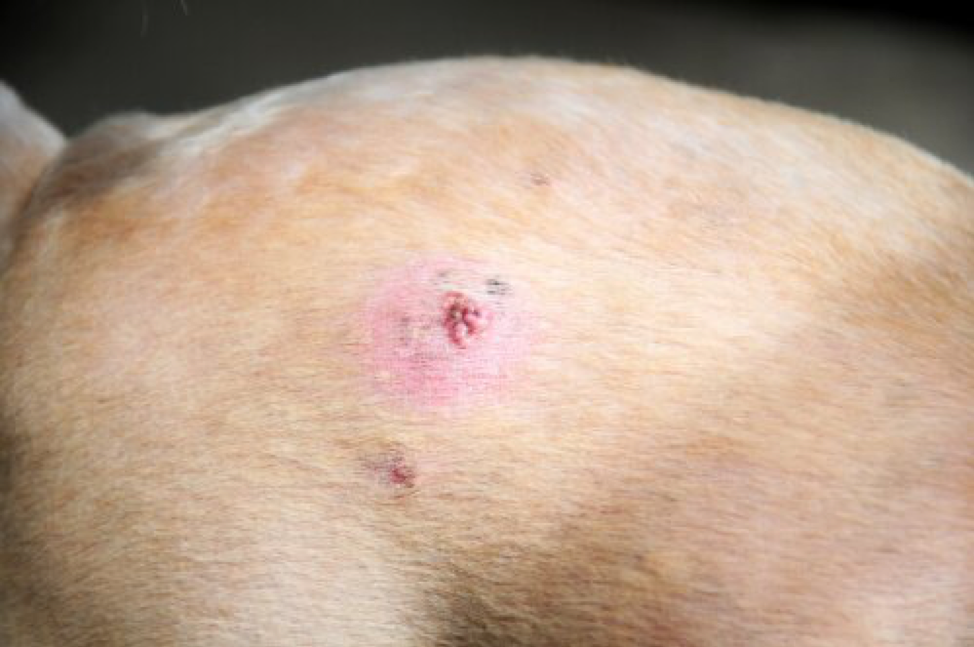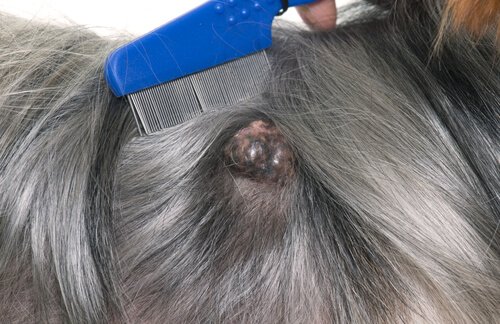Skin Cancer in Dogs

Some people believe that their pet’s fur is enough to protect their skin from any external elements that could harm them. Unfortunately, dogs can get skin cancer. It doesn’t matter what breed or age the dog is, because they can suffer from skin cancer at any stage of their life.
What is Skin Cancer?
It’s important to keep in mind that every living thing has cells that inevitably get damaged. However, these cells are replaced by new ones. The problem is when these damaged cells begin to reproduce uncontrollably and cause cancer, instead of dying off like they are supposed to.
When there are a lot of them grouped together, they form a bulge called a tumor. Tumors can warn us that there is cancer and that something is wrong. There are two types of tumors: one is benign, and the other is malignant.
Benign tumors are located in a specific area, and do not affect other tissues or areas of the body. However, malignant tumors can spread and metastasize.
The sun has the ability to alter melanin, the substance in your skin that defines your skin color, which is also true for pets.
When an organism’s melanin is altered, it produces melanomas that turn into skin tumors. These tumors ca be deadly.
Can Dogs Get Skin Cancer?
Yes, and it’s more common than you can ever imagine. The most popular kind are mast cell tumors. Even so, benign tumors can also develop. However, they will not have major repercussions on the animal and they are generally located on the fatty areas of the body.

Even though most people believe that cancer only affects older dogs, they are not the only ones that can develop this disease. There have even been cases of it developing in puppies.
As mentioned above, the problem is that people believe that their pet’s fur is enough to protect their skin. Therefore, these same people unintentionally expose their pets to the sun more than usual.
Sometimes you see people walking their pets at the hottest hours of the day, or others who leave their pets on terraces or balconies. Exposing them to the sun in this manner will only increase their chances of developing skin cancer.
The chance of a dog developing skin cancer may increase depending on the breed. These are the breeds that are most prone to getting skin cancer:
- Pugs
- Bulldogs
- Labradors
- Weimaraner
Symptoms of Skin Cancer in Dogs
Check your dog to see if he has any of the following symptoms to find out if your dog has skin cancer:
- Lumps on his skin
- Skin that is thicker than normal
- Unhealed wounds
- Weight loss
- Limping
- Lethargy
- Difficulty breathing and doing his business

How to Treat Skin Cancer in Dogs
Veterinary oncology has come a long way, so cancer treatment is successful in most cases. Tumor removal is the chosen method to get rid of this dangerous enemy that has the ability to take your pet’s life. However, depending on the type of tumor, your veterinarian may suggest other alternatives.
In a lot of cases, it is very possible that chemotherapy or radiotherapy will be considered necessary to completely eliminate any trace of the malignant cells.
It is very important to check your dog for tumors on a regular basis. Take your dog to the vet immediately if you find anything that seems out of the ordinary, before there are any changes in his body or behavior.
It’s not possible to completely prevent cancer. However, when it comes to skin cancer, you can should make sure your pet is not overly-exposed to the sun. This is especially important during the hottest time of the day.
This text is provided for informational purposes only and does not replace consultation with a professional. If in doubt, consult your specialist.